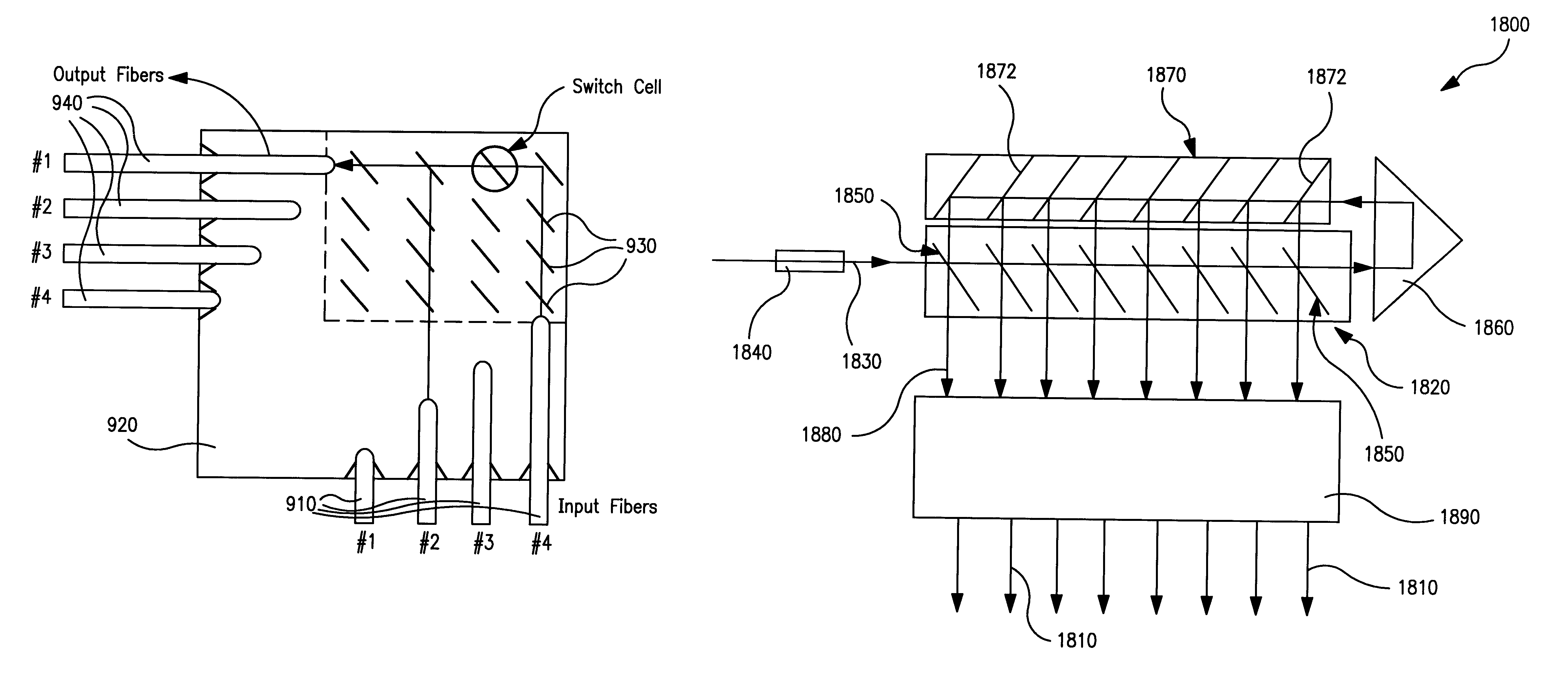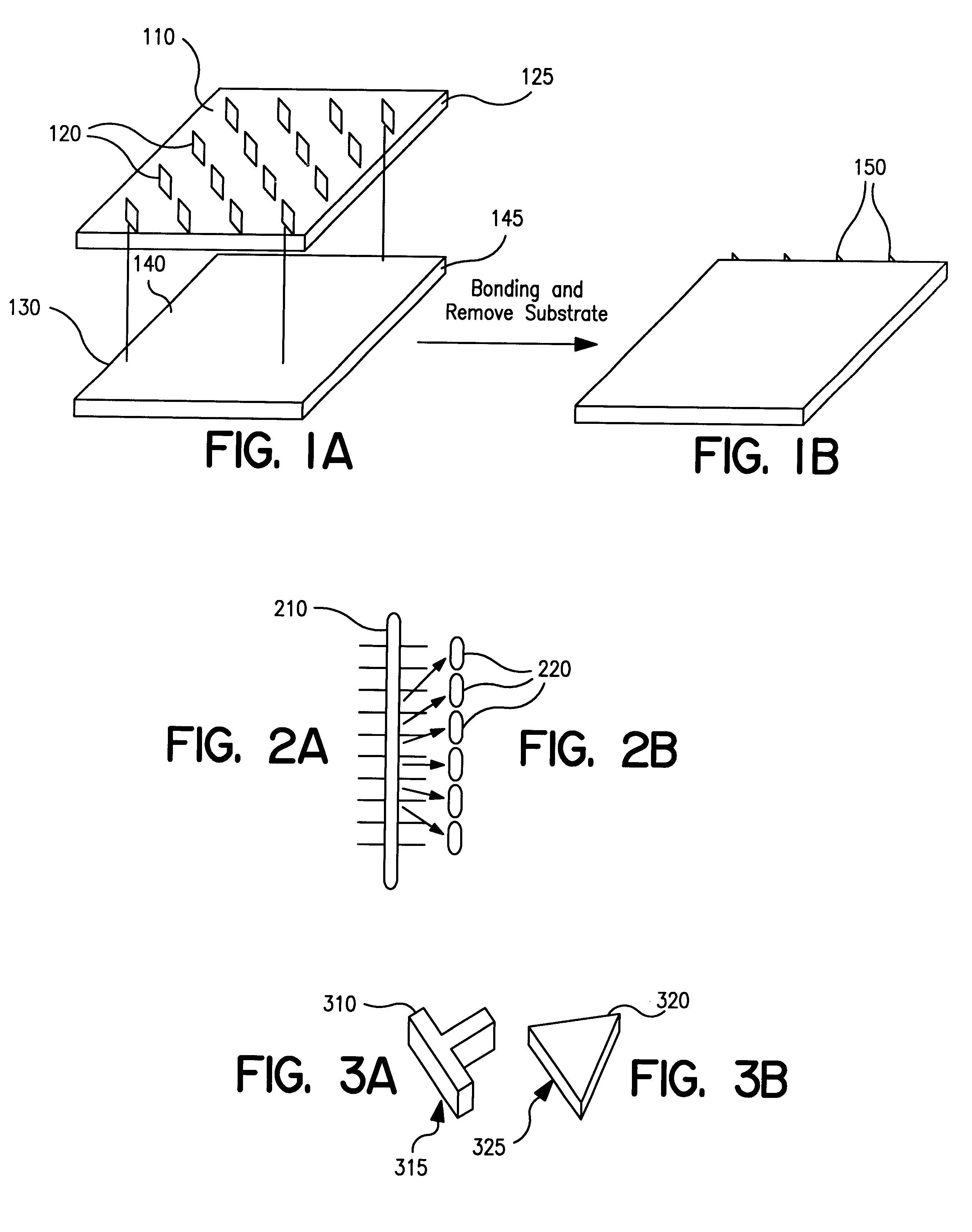Optomechanical matrix switches including collimator arrays
a matrix switch and optomechanical technology, applied in the field of optical switching, can solve the problems of macro-scale optomechanical switches that require extensive manual assembly, macro-scale optomechanical switches are bulky, and the switching speed of macro-scale optomechanical switches is slow
- Summary
- Abstract
- Description
- Claims
- Application Information
AI Technical Summary
Benefits of technology
Problems solved by technology
Method used
Image
Examples
example
(5)
Another example includes a vertical mirrors on torsion plate configured to move with a push-pull electrostatic force. Thus, the torsion plate can be displaced with an electric field.
E. Matrix Switch Architecture for Uniform Fiber Coupling Loss
Most of the volume of an optomechanical matrix switch is composed of an array of free-space optical switches, an input fiber array, and an output fiber array. Such arrangement, however, has non-uniform optical insertion losses. In more detail, assuming the ends of the fiber are coplanar, the optical path length is different when each switching cell is activated (e.g., the optical path length of input #1 to output #1 is less than that of input #1 to output #8).
Referring to FIGS. 9A-9B, the invention includes an optomechanical matrix switch architecture that will have uniform optical coupling loss, independent of which switch is activated. A series of input fibers 910 are coupled to a substrate 920. An array of optomechanical switching cells 9...
PUM
 Login to View More
Login to View More Abstract
Description
Claims
Application Information
 Login to View More
Login to View More - R&D
- Intellectual Property
- Life Sciences
- Materials
- Tech Scout
- Unparalleled Data Quality
- Higher Quality Content
- 60% Fewer Hallucinations
Browse by: Latest US Patents, China's latest patents, Technical Efficacy Thesaurus, Application Domain, Technology Topic, Popular Technical Reports.
© 2025 PatSnap. All rights reserved.Legal|Privacy policy|Modern Slavery Act Transparency Statement|Sitemap|About US| Contact US: help@patsnap.com



